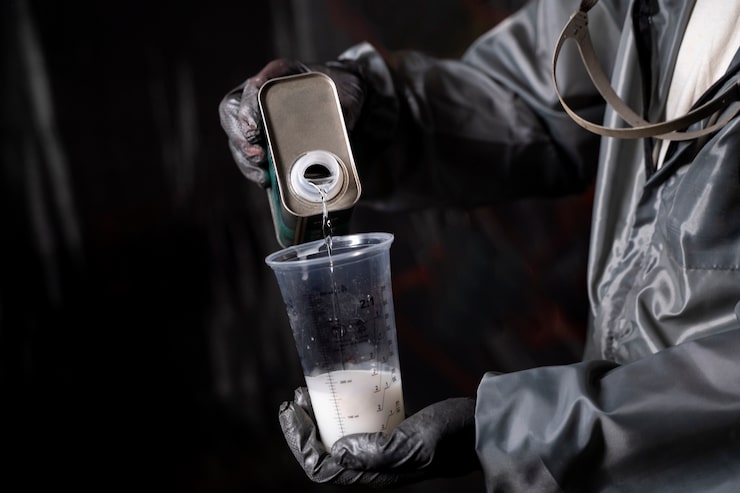Understanding what is electrostatic powder coating is crucial for industries and manufacturers seeking an efficient, durable, and environmentally friendly finishing solution. Electrostatic powder coating is a modern technique used to apply a protective and decorative layer on metal and other conductive surfaces. This method uses powdered paint particles that are electrically charged and sprayed onto a grounded object, which allows the particles to adhere evenly and create a uniform coating. The process ultimately results in a high-quality finish that is resistant to corrosion, chemicals, and physical wear.

At its core, what is electrostatic powder coating involves several key steps: surface preparation, powder application, and curing. The process begins with preparing the surface of the item to be coated, which is essential to ensure the coating adheres properly and lasts long. This preparation typically includes cleaning to remove oils, dirt, and rust, often using techniques like sandblasting or chemical cleaning. Without proper surface treatment, the powder coating may peel or fail prematurely.
Following surface preparation, the powdered coating is applied. Using specialized electrostatic spray guns, the powder is given a positive electrical charge as it leaves the nozzle. The object to be coated is connected to a grounding system, which attracts the charged powder particles. This electrostatic attraction causes the powder to cling to the surface, ensuring a more efficient and uniform coating compared to traditional spray painting methods. Because the powder is electrically charged, it tends to wrap around complex shapes and hard-to-reach areas better than liquid paints.
Once the powder has been applied, the coated item moves to the curing stage. This involves heating the object in an oven at a controlled temperature, typically ranging from 160 to 210 degrees Celsius. The heat melts the powder particles, causing them to flow together and chemically bond to form a continuous, hard film. The curing process solidifies the coating, giving it its characteristic durability and smooth finish. Proper curing times and temperatures are critical; inadequate curing can lead to poor adhesion or soft coatings, while overcuring can cause discoloration or damage to the substrate.
One of the biggest advantages of what is electrostatic powder coating lies in its environmental benefits. Unlike traditional liquid paints, powder coatings contain no solvents and therefore emit negligible amounts of volatile organic compounds (VOCs). This makes the process safer for workers and reduces harmful emissions, complying with increasingly strict environmental regulations worldwide. Furthermore, overspray powder can be collected and reused, minimizing waste and increasing material efficiency.
The durability of powder coatings is another significant benefit. The cured film is highly resistant to scratching, chipping, fading, and corrosion, which makes it suitable for applications in harsh environments such as automotive parts, industrial equipment, outdoor furniture, and appliances. The coatings also exhibit excellent chemical resistance, making them ideal for products exposed to solvents, acids, and alkalis.
In terms of aesthetics, electrostatic powder coating offers a wide range of colors, textures, and finishes. Manufacturers can choose from matte, glossy, satin, or textured surfaces to meet specific design requirements. Additionally, powder coatings provide uniform thickness without drips or sags, resulting in a professional-looking finish with minimal defects.
However, understanding what is electrostatic powder coating also involves recognizing some limitations. The process is mainly suited for electrically conductive substrates such as metals. Non-conductive materials require special treatment or conductive primers for effective coating. The equipment and curing ovens can involve significant upfront investment, which might be a consideration for small-scale operations. Also, very large or heat-sensitive parts may pose challenges due to oven size or curing temperature requirements.
Technological advancements continue to improve the efficiency and quality of electrostatic powder coating. New powder formulations allow for lower curing temperatures and enhanced properties like UV resistance or flexibility. Automated spraying systems and robotic arms increase precision and throughput in high-volume manufacturing environments. Digital controls and sensors help optimize the electrostatic charge and spray patterns, reducing defects and material consumption.
For businesses, mastering what is electrostatic powder coating can translate into higher product quality, extended product lifespan, and compliance with environmental standards. It also opens opportunities for customization and innovation in product design. From automotive manufacturers to appliance producers and architectural firms, the benefits of this coating technology are widely recognized.
In conclusion, what is electrostatic powder coating is a sophisticated process that involves electrically charging powdered paint particles to efficiently coat conductive surfaces. It offers superior durability, environmental friendliness, and aesthetic versatility compared to traditional painting methods. By understanding its principles, applications, and limitations, manufacturers can make informed decisions that improve production outcomes and product performance in a sustainable way.


